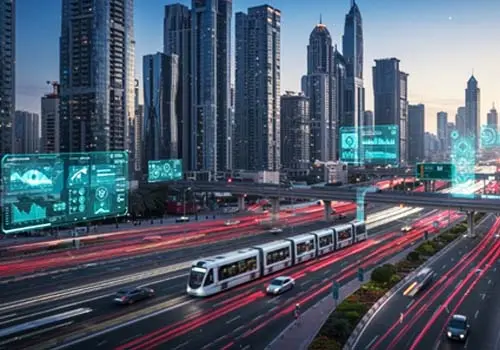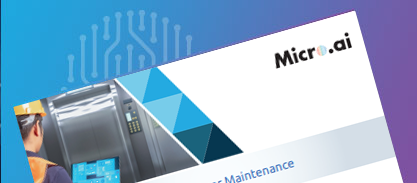Infrastructure assets are aging. Demand is rising. Budgets are constrained. Traditional infrastructure monitoring and management approaches cannot keep pace with increasing operational complexity and required service reliability.
MicroAI’s Agentic AI and GenAI solutions enable infrastructure systems to function as intelligent agents—continuously learning, anticipating failures, optimizing resource usage, and improving decision-making across operations and maintenance.

Agentic AI Combined with GenAI – Core Capabilities
-
Intelligent Asset Health Monitoring
- IoT, SCADA, GIS, BIM, and sensor data unified into a single, contextualized environment.
- Agentic AI fault detection identifies early warning signs of degradation and failure riks.
- GenAI enabled automated diagnostics pinpoint root causes and provide knowledge-based recommendations for action.
-
Predictive and Autonomous Maintenance
- Embedded, edge-based, machine-learning models learn the normal state of asset behavior and trigger alerts on impending failure.
- Agentic AI triggers proactive work orders, inspections, or component replacements.
- Extends asset lifespans, reduces downtime, optimizes energy consumption, and lowers emergency repair costs.
-
GenAI Knowledge Management and Field Support
- Conversational, domain-trained digital assistant for technicians and engineers.
- Natural language search across manuals, inspection logs, and historical data.
- Step-by-step guidance for human-in-the-loop troubleshooting and repair workflows.
-
Overall Operational Optimization and Resource Efficiency
- Real-time identification and isolation of inefficiencies, energy losses, and capacity stress points.
- Automated control recommendations improve throughput, flow, energy usage, and reliability.
- Continuous, closed-loop, self-improvement models adapt to changing conditions in real time.
Example Use Cases
Transportation Infrastructure
Pavement health monitoring, bridge structural condition prediction, and rail line safety optimization
Water and Wastewater Systems
Leak detection, pump efficiency optimization, and intelligent flow control
Power Transmission and Distribution
Substation asset monitoring, health scoring, outage prediction, and grid balancing
Smart Buildings and Civil Operations
Traffic flow optimization, building energy intelligence, and public safety infrastructure monitoring
How it Works
-
Intelligent Data Fusion and Contextual Awareness
- Integrates data streams from IoT sensors, SCADA, GIS, BIM systems, and satellite imagery.
- Applies GenAI-based knowledge extraction to interpret unstructured data such as maintenance logs, design documents, and inspection reports.
- Builds contextual digital twins of infrastructure assets for real-time operational intelligence and action impact simulation.
-
Agent-Based Autonomy
- Deploys autonomous software agents at the edge to monitor conditions and make localized decisions.
- AI Agents continuously adjust control parameters (e.g., traffic flow, water distribution pressure, energy dispatch) based on sensor feedback.
- Utilizes reinforced learning to self-optimize system performance over time.
-
Knowledge Automation
- Continuously learns from engineering documents, design standards, and field reports to create a living knowledge graph.
- Uses GenAI-powered summarization and reasoning to assist in compliance, safety reporting, and design validation.
- Provides conversational access to organizational expertise through AI copilots.
-
Edge to Cloud Collaboration
- Agentic AI agents operate at the edge for low-latency control while GenAI models in the cloud handle large-scale analytics.
- Synchronizes operational data and AI-driven recommendations across distributed assets.
- Enables secure federated learning without exposing sensitive infrastructure data.
Outcomes and Impacts
- Reduced unplanned downtime: Detect, isolate, and address issues before service interruptions occur.
- Lower asset maintenance and repair costs: Intelligent monitoring and predictive maintenance prevents high-cost emergency interventions.
- Extended asset lifespans: Predictive insights mitigate asset degradation and improve replacement planning.
- Enhanced safety and regulatory compliance: Automated alerts and GenAI-enabled knowledge management optimize regulatory readiness.
- More robust sustainability: Waste reduction, more efficient use of resources, greater operational control, and enhanced predictability.




